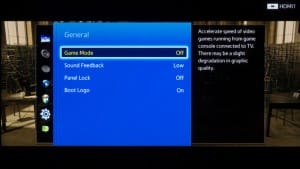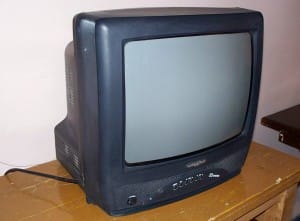Video Game Lag
 Video game lag: a reader asks…
Video game lag: a reader asks…
Hi Chris, my son is an avid video gamer. He’s got his game console hooked up to a big flat-screen TV in our basement. My son is complaining about “lagging”, thinks the internet is too slow, and wants us to fix the problem. Our wi-fi is upstairs, and my cable provider suggested either another cablemodem downstairs or a powerline access point. Can you help?
The problem of internet speed may or may not be connected to your son’s lagging game performance. But let me tackle these two concepts separately – slow internet and game lagging:
 Slow Internet: Wi-fi connectivity is pretty variable and subject to a lot of potential interference. I wrote something about this last week in this article, which might help you and your son figure out the best place to place a Wi-fi extender for best signal reception. I’d stay away from powerline solutions, they have similar problems of interference as Wi-fi, and in my opinion just aren’t reliable enough. You can certainly add another cablemodem, but that really just adds to your monthly cable bill. If at all possible, you should look into running an Ethernet cable from wherever your existing cablemodem is down to the basement so your son doesn’t have to depend on Wi-fi for internet connectivity. But the lagging problem may have nothing to do with this.
Slow Internet: Wi-fi connectivity is pretty variable and subject to a lot of potential interference. I wrote something about this last week in this article, which might help you and your son figure out the best place to place a Wi-fi extender for best signal reception. I’d stay away from powerline solutions, they have similar problems of interference as Wi-fi, and in my opinion just aren’t reliable enough. You can certainly add another cablemodem, but that really just adds to your monthly cable bill. If at all possible, you should look into running an Ethernet cable from wherever your existing cablemodem is down to the basement so your son doesn’t have to depend on Wi-fi for internet connectivity. But the lagging problem may have nothing to do with this.
Game Lagging: This may be caused by a completely different problem – the television. Unless you have the latest and most expensive television that supports the latest HDMI standards and has a high (120 or 240hz) refresh rate, then there’s going to be some signal processing that happens as the signal makes its way from the game console to your screen. This signal processing causes a delay (usually some milliseconds) that for most uses doesn’t matter. But for gamers it’s the difference between blasting that enemy and getting blasted by that enemy! Here’s the situation:
 All digital video, including computer games and console gaming systems are designed to display video as a set of still frames that pass by quickly. This is often defined as frames-per-second or FPS. Most gamers want to use 60 FPS or faster.
All digital video, including computer games and console gaming systems are designed to display video as a set of still frames that pass by quickly. This is often defined as frames-per-second or FPS. Most gamers want to use 60 FPS or faster.- Many flat-panel televisions, while still using digital video, are designed to play standard and high-definition television and video, which runs anywhere from 24-30 FPS.
So the video game may be pumping out video at a certain FPS rate and screen resolution size which doesn’t match what the TV is capable of displaying. That forces some processing on the TV and your son may be experiencing “input lag” or “display lag”, due to a number of causes:
- The age of the television. Older sets may not have the hardware needed to instantly convert the incoming signal from the game console to the screen size and refresh rate of the television. Many older TVs use a refresh rate of 30hz or 60hz.
 The type of connection. Older versions of HDMI simply cannot work at fast frame rates. Anything older than HDMI 2.0 is going to have problems with high frame rates. This may be built into the tv itself.
The type of connection. Older versions of HDMI simply cannot work at fast frame rates. Anything older than HDMI 2.0 is going to have problems with high frame rates. This may be built into the tv itself.- Your television’s video settings. Normally, there is some sort of automatic signal processing going on. This may be reflected in various video adjustment settings on the television.
So what do you do? First off, you should disable any signal processing being done by the television. Some models may have a “game mode” which you can turn on which disables most signal processing. There may also be some settings that say something like upconversion or smoothing, Cinema or Sports mode, etc. that you should turn off, and any special movie modes. And it may just be that the huge screen he’s playing on requires a lot of work for the TV to process the signals. You can check the Input Lag database to see what if the model you have has a bad rating. But this may not be enough, so here are some other, more drastic options:
 The cheapest way to solve this is to go back in time. Go buy an old-style cathode-ray tube (CRT) television. You may have to visit 2nd hand stores and consignment shops. You should be able to find a 25″ or so TV and get it for less than $25. The reason these will work is that they are so old, they don’t do any signal processing at all. You just have to make sure your son’s gaming console has a cable output that will work with the older television.
The cheapest way to solve this is to go back in time. Go buy an old-style cathode-ray tube (CRT) television. You may have to visit 2nd hand stores and consignment shops. You should be able to find a 25″ or so TV and get it for less than $25. The reason these will work is that they are so old, they don’t do any signal processing at all. You just have to make sure your son’s gaming console has a cable output that will work with the older television.- You could spend some money and buy a new flat-panel computer monitor that has the right connection for your game console. You can find sizes up to 32″ – such as this 24″ LG model for under $400 all the way up to this top-of-the-line BenQ 32″ model for over $1,000.
- You could spend some money and buy a new flat-panel television that has the right connection for your game console. Be sure to look for HDMI 2.0 or higher, and a 120-240hz refresh rate. Go as big as your budget allows (but no larger than 47″). You generally want to avoid projection systems and Plasma televisions. Then make sure that your son uses the game mode feature and turns off any other screen effects (various modes like Cinema, Sports, etc.) when he plays video games.
I’m guessing that your son will want to hear this from another gamer, so here’s a great video I found on Youtube about this subject that he’ll enjoy:
This website runs on a patronage model. If you find my answers of value, please consider supporting me by sending any dollar amount via:
or by mailing a check/cash to PosiTek.net LLC 1934 Old Gallows Road, Suite 350, Tysons Corner VA 22182. I am not a non-profit, but your support helps me to continue delivering advice and consumer technology support to the public. Thanks!
 All digital video, including computer games and console gaming systems are designed to display video as a set of still frames that pass by quickly. This is often defined as frames-per-second or FPS. Most gamers want to use 60 FPS or faster.
All digital video, including computer games and console gaming systems are designed to display video as a set of still frames that pass by quickly. This is often defined as frames-per-second or FPS. Most gamers want to use 60 FPS or faster. The type of connection
The type of connection The cheapest way to solve this is to go back in time. Go buy an old-style cathode-ray tube (CRT) television. You may have to visit 2nd hand stores and consignment shops. You should be able to find a 25″ or so TV and get it for less than $25. The reason these will work is that they are so old, they don’t do any signal processing at all. You just have to make sure your son’s gaming console has a cable output that will work with the older television.
The cheapest way to solve this is to go back in time. Go buy an old-style cathode-ray tube (CRT) television. You may have to visit 2nd hand stores and consignment shops. You should be able to find a 25″ or so TV and get it for less than $25. The reason these will work is that they are so old, they don’t do any signal processing at all. You just have to make sure your son’s gaming console has a cable output that will work with the older television.





